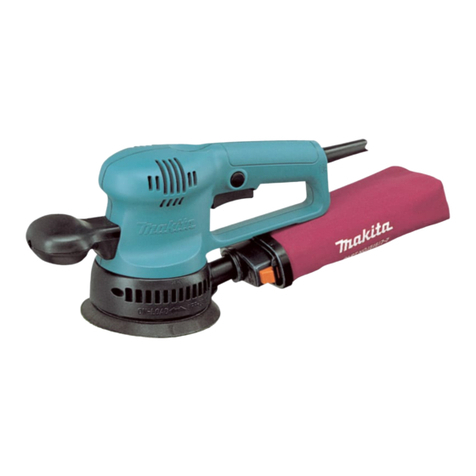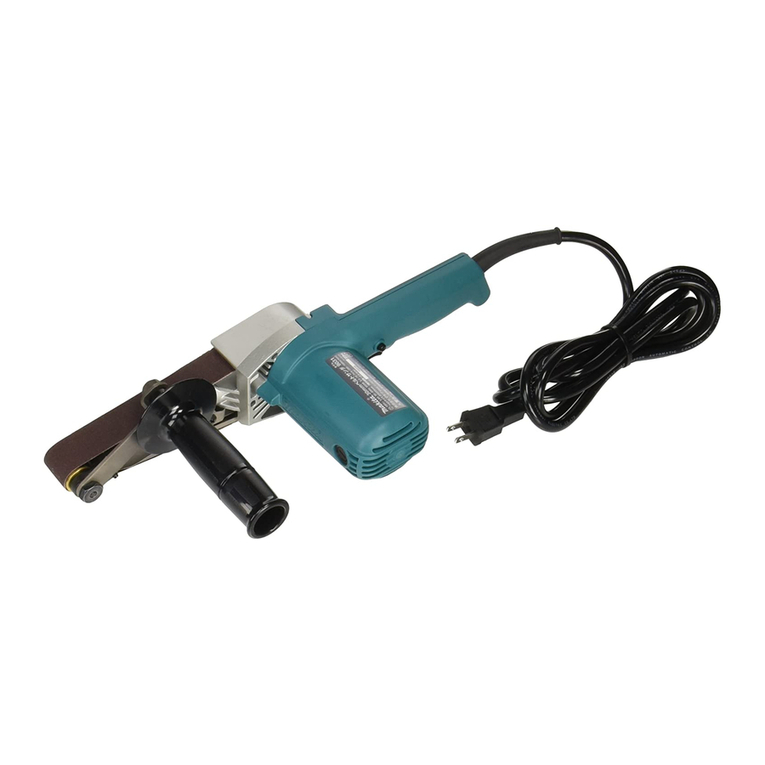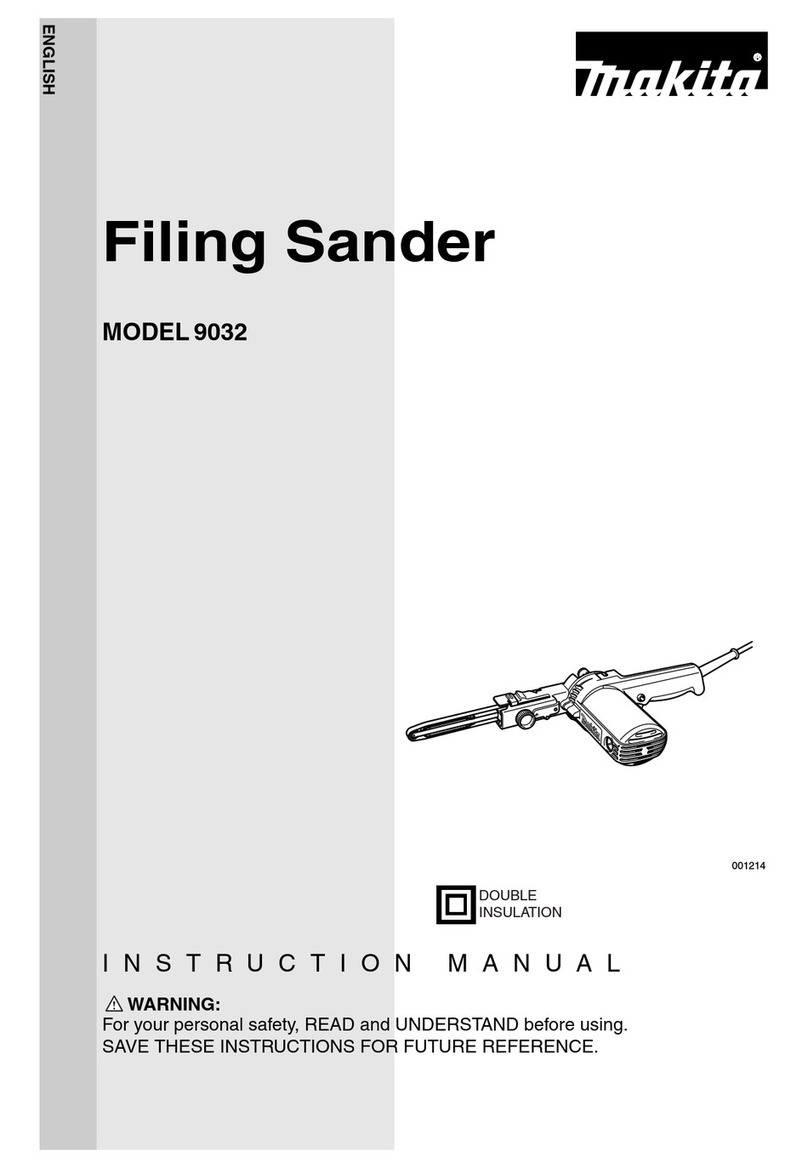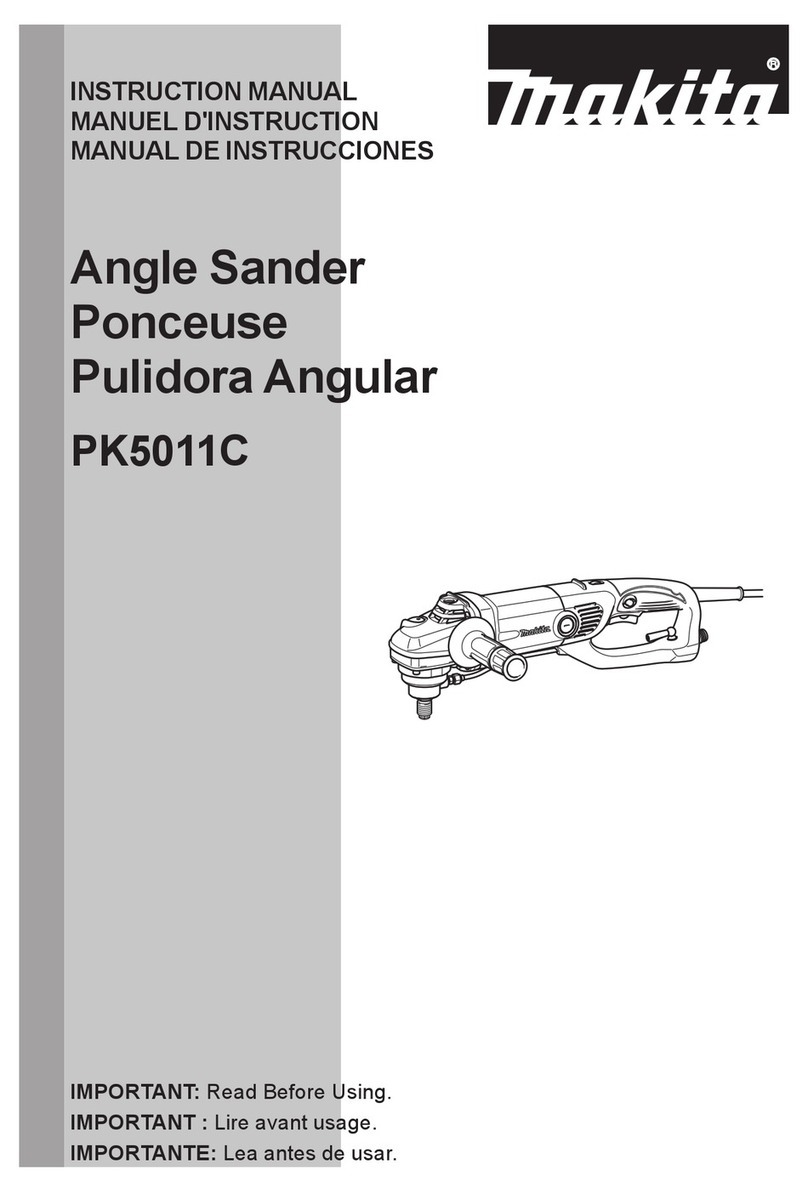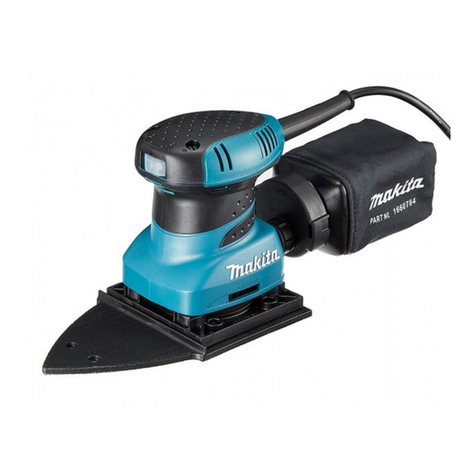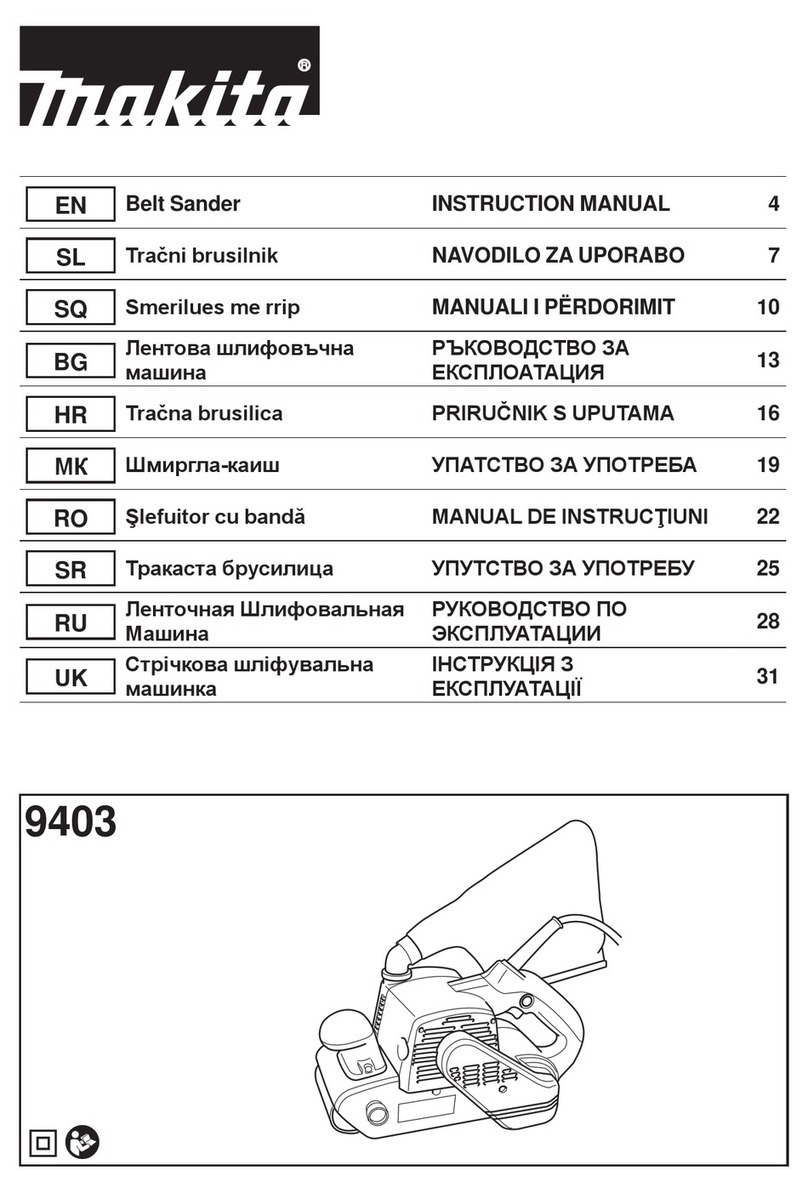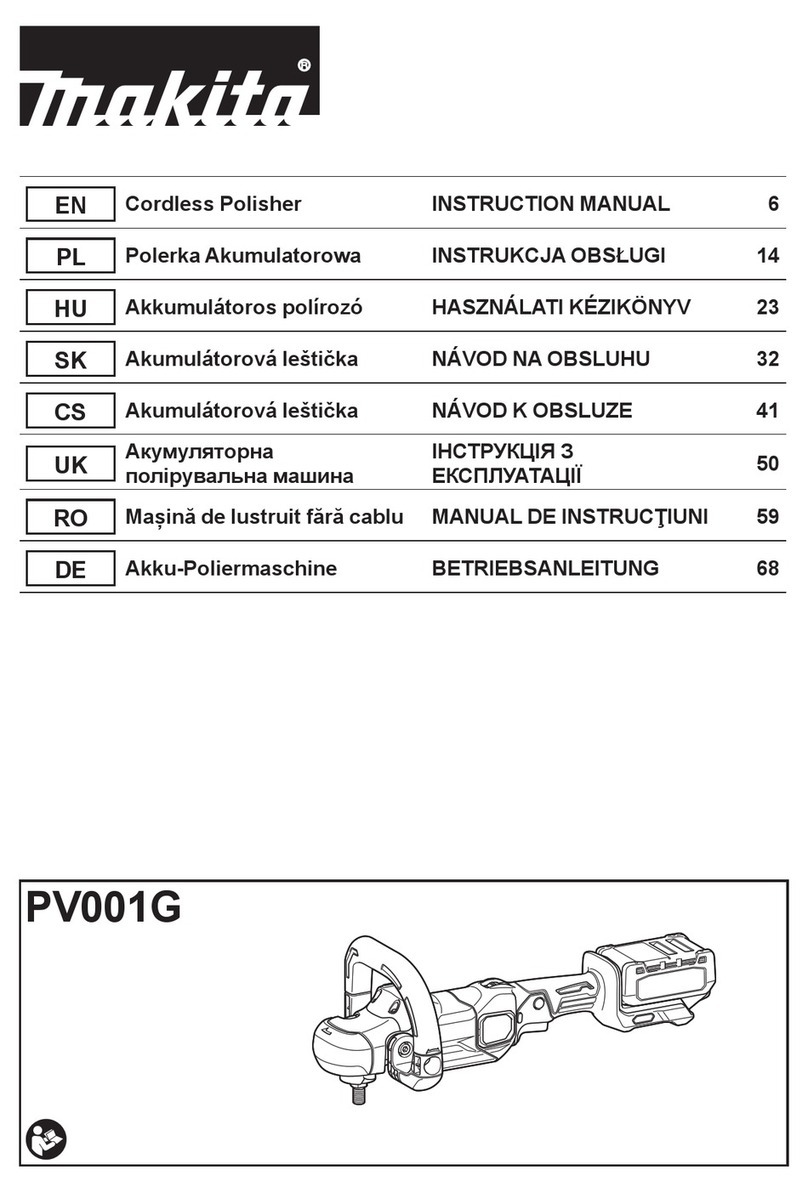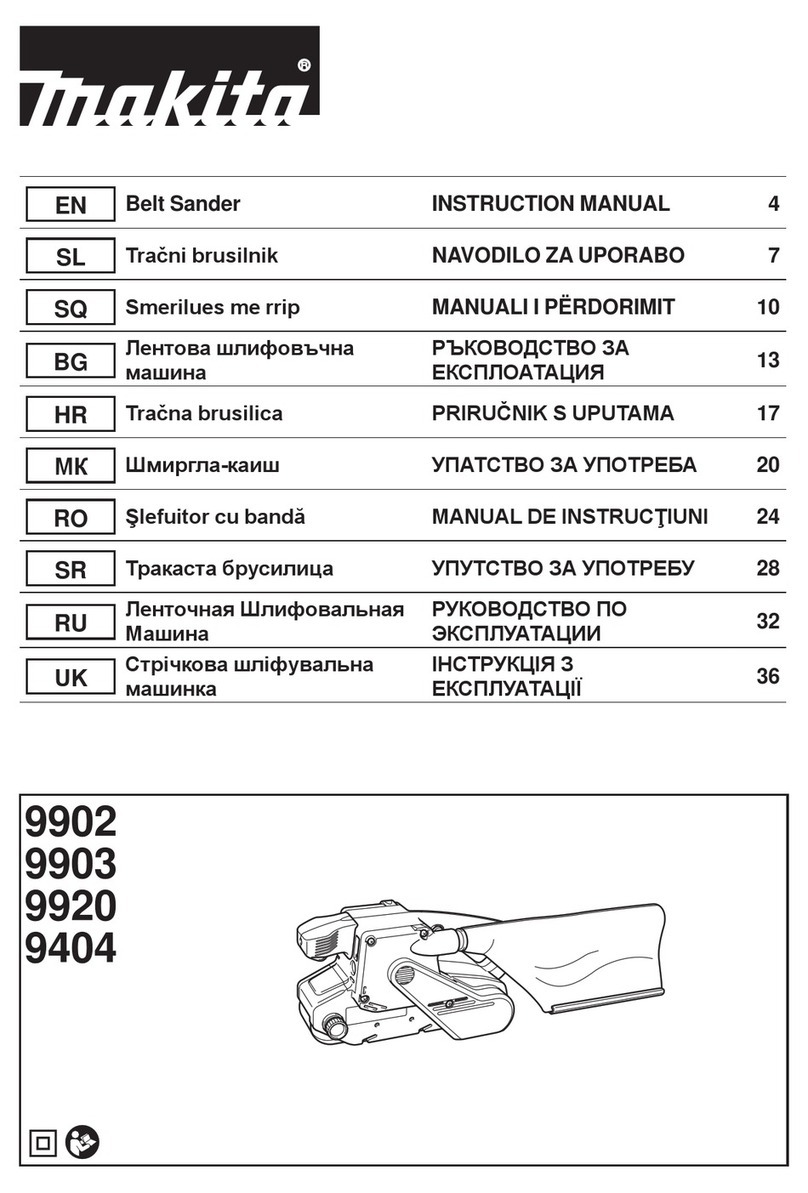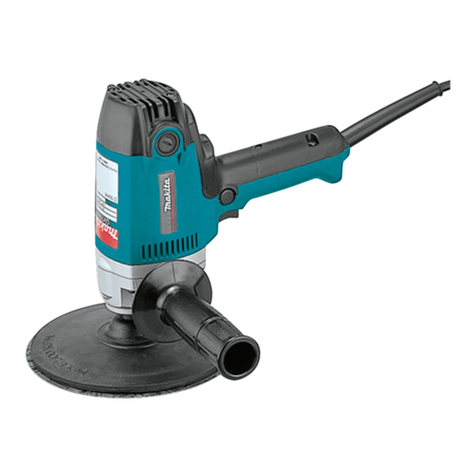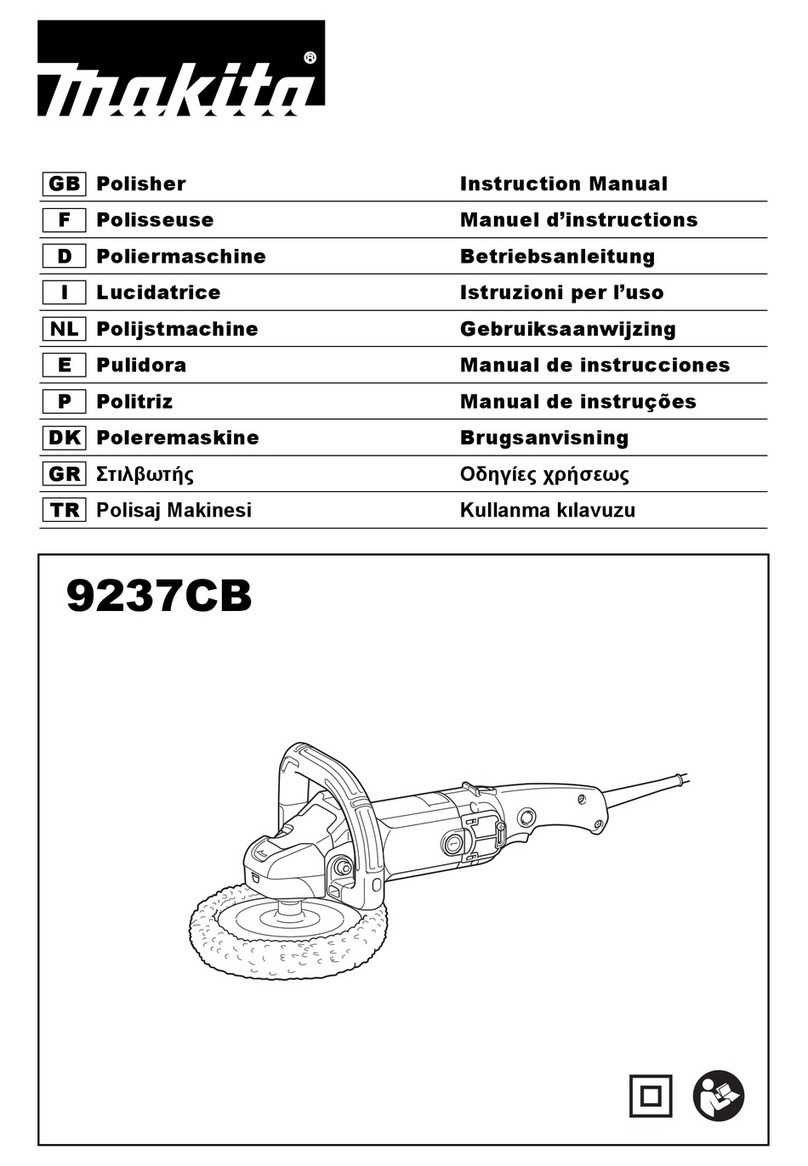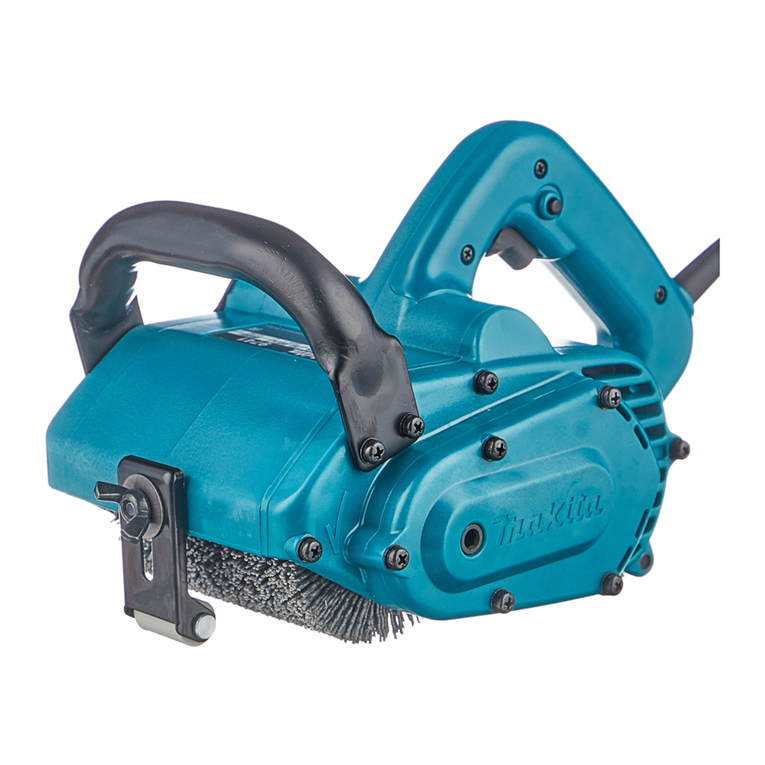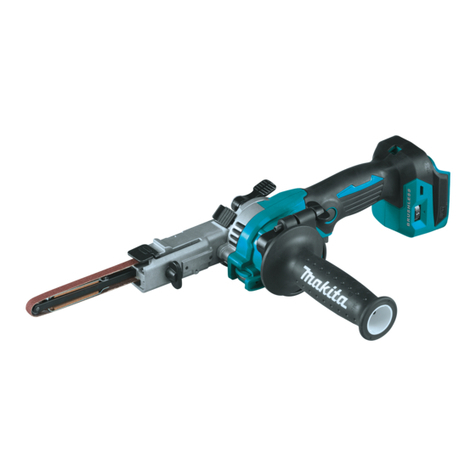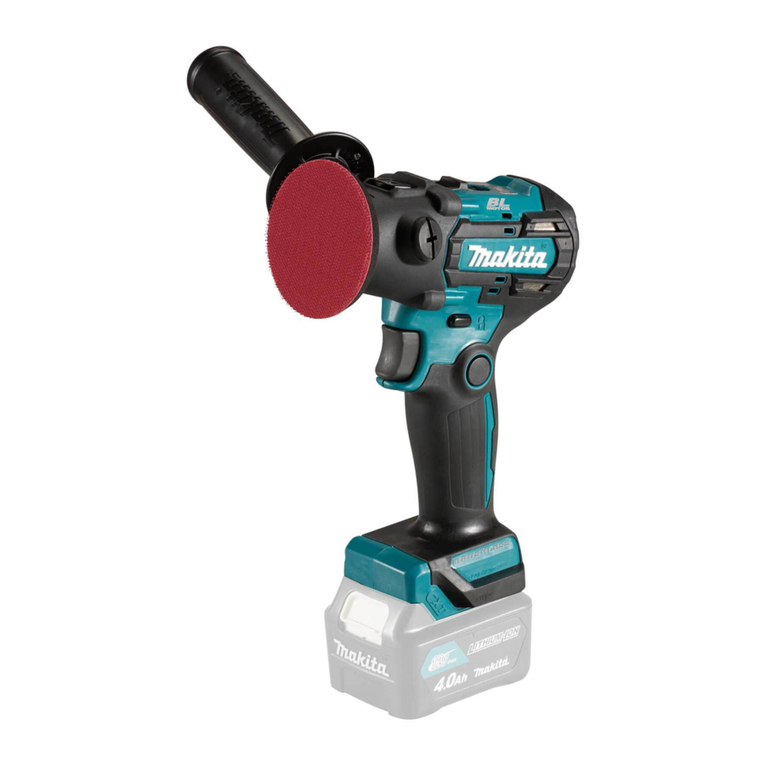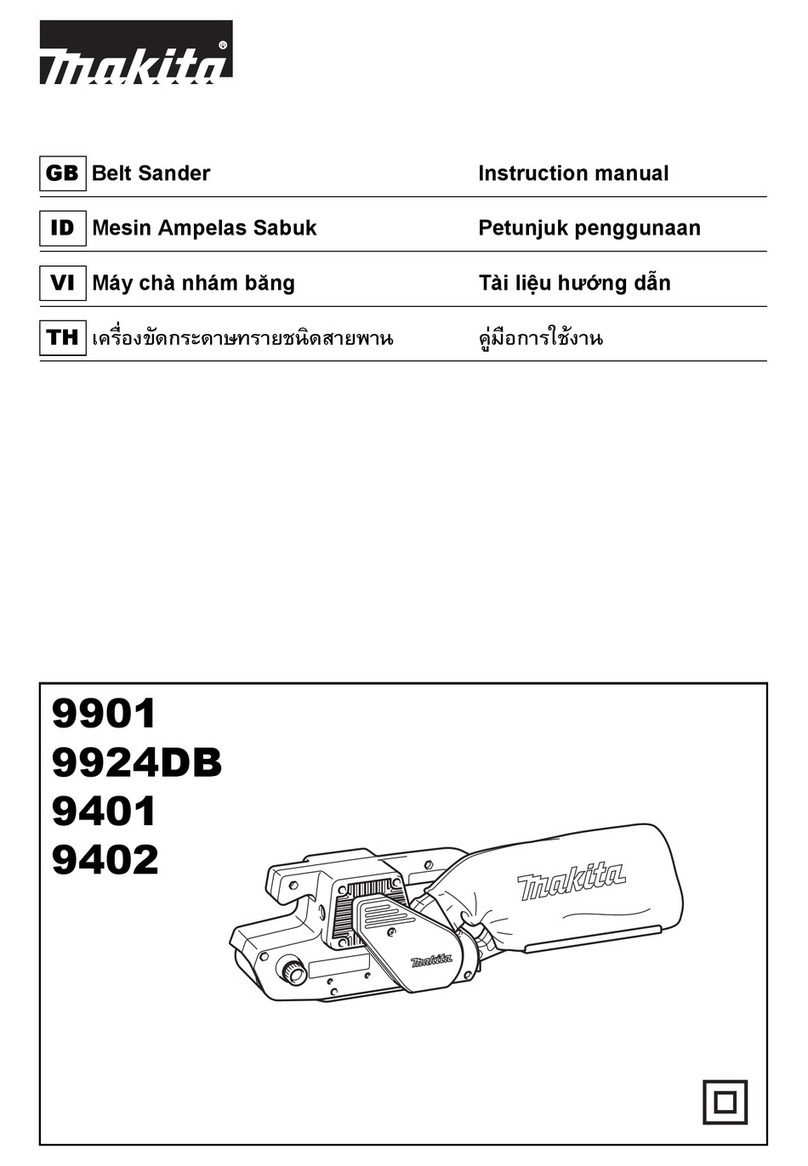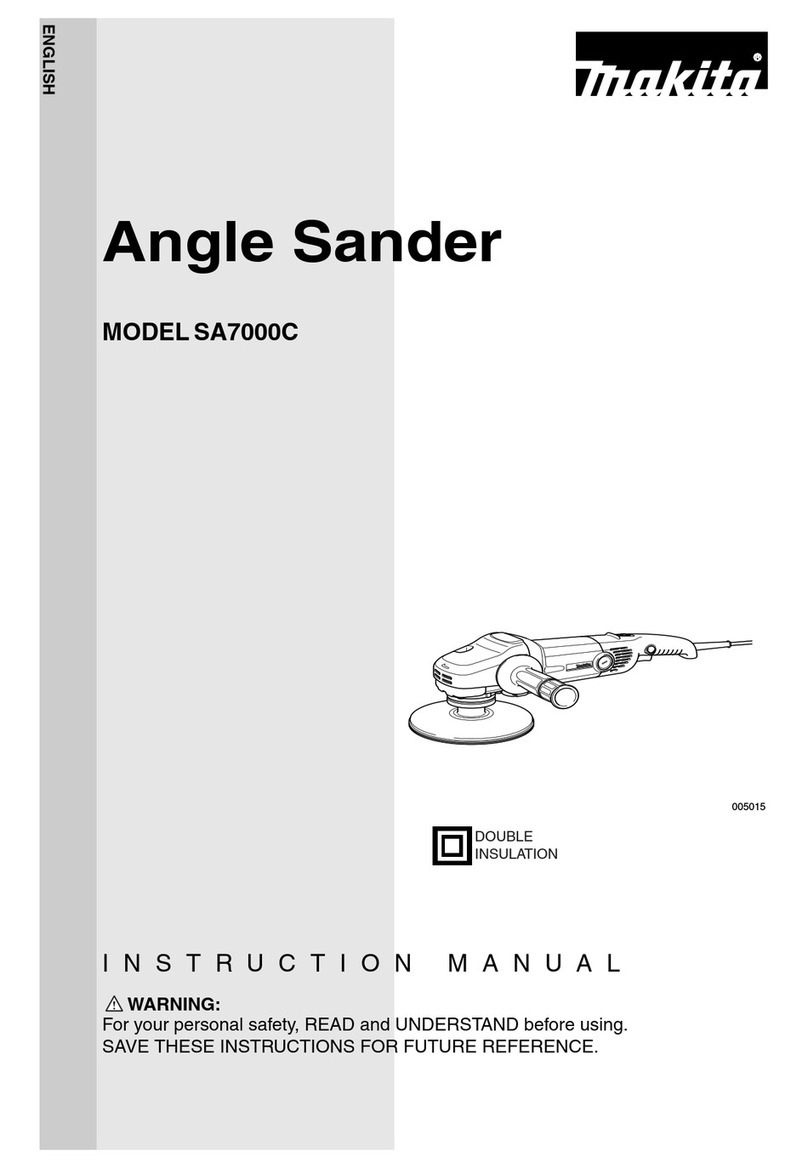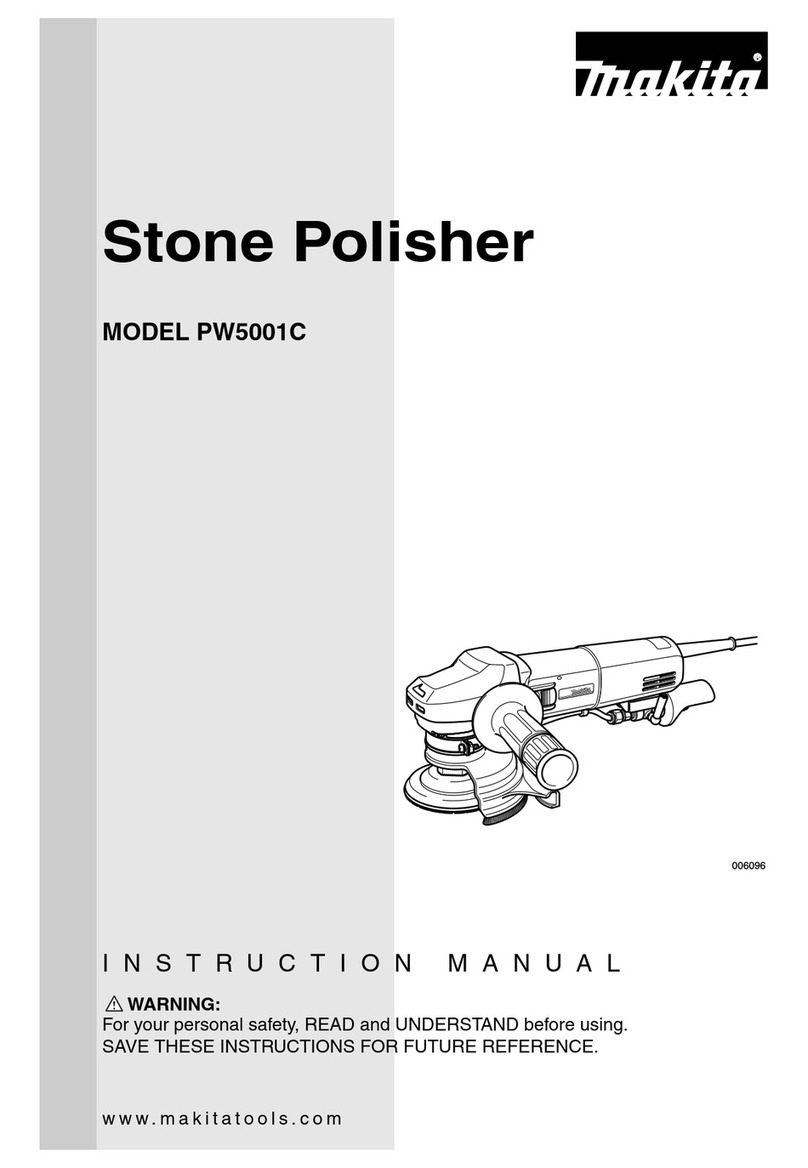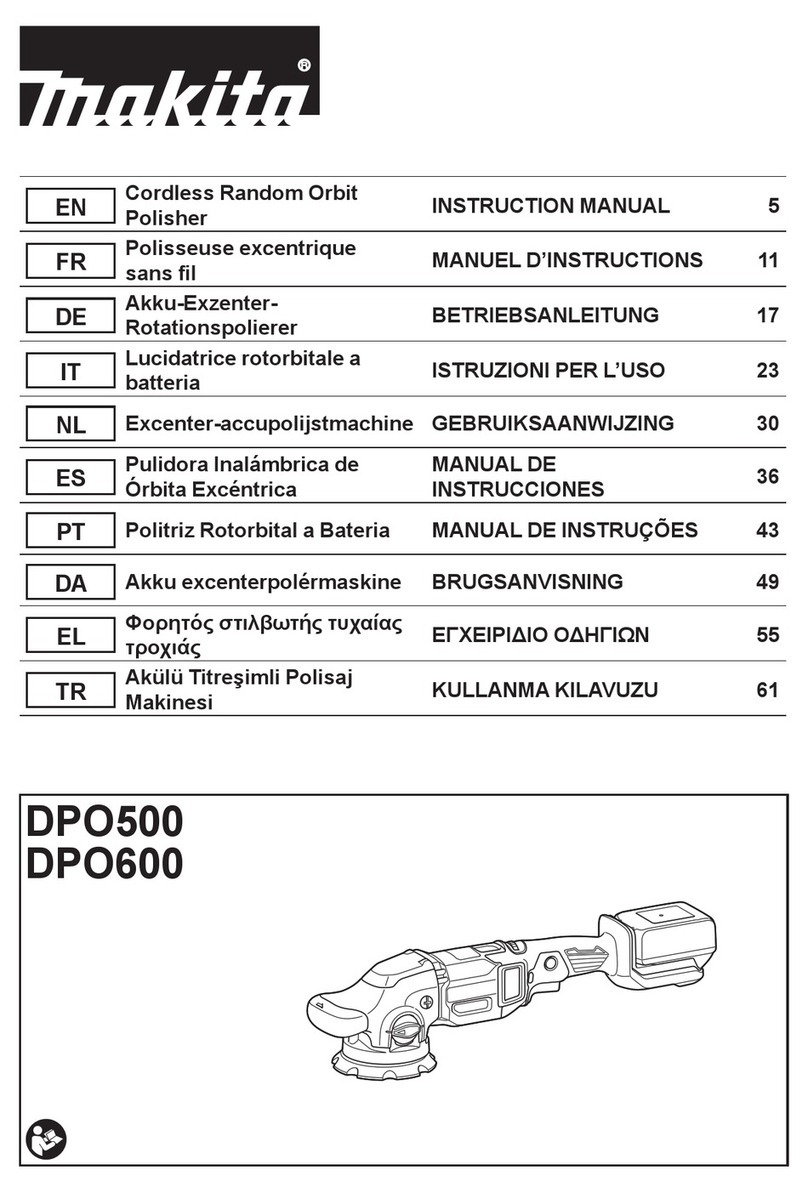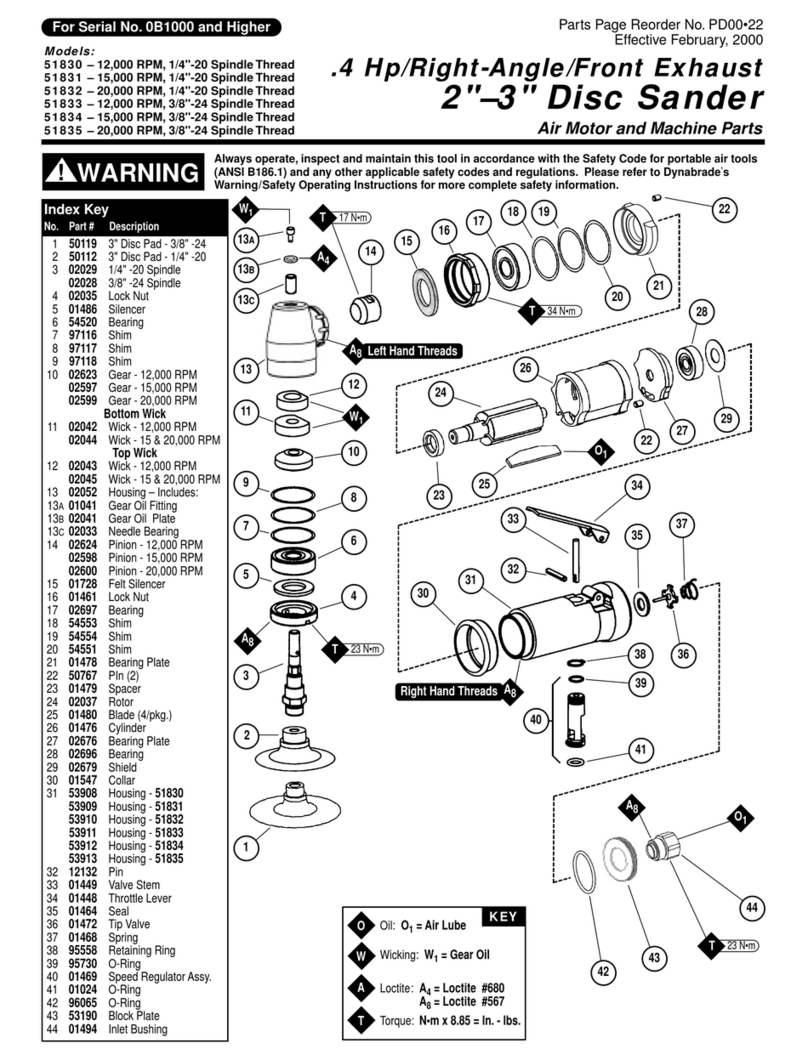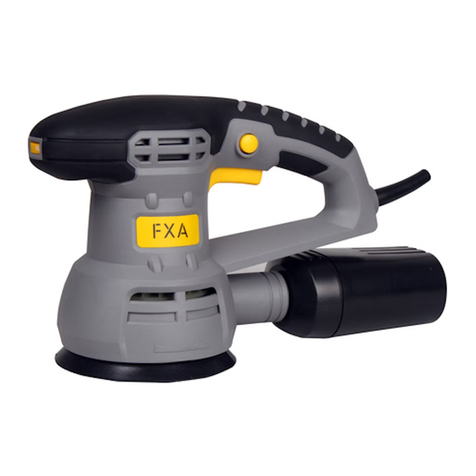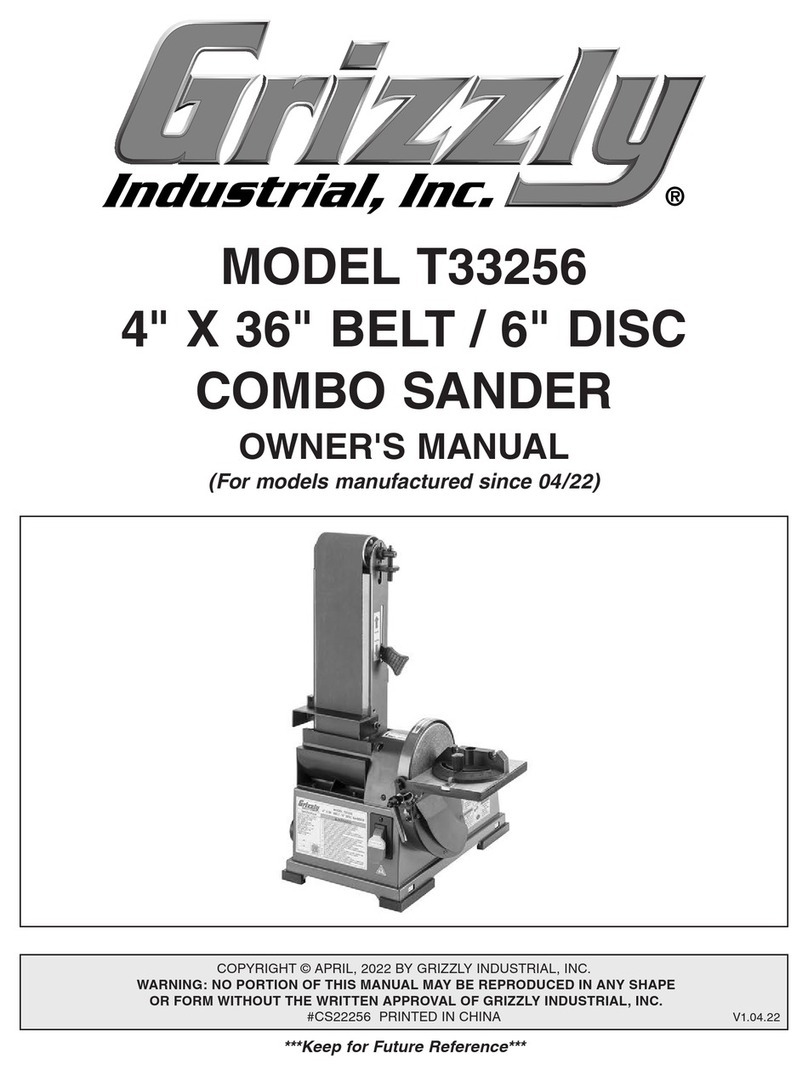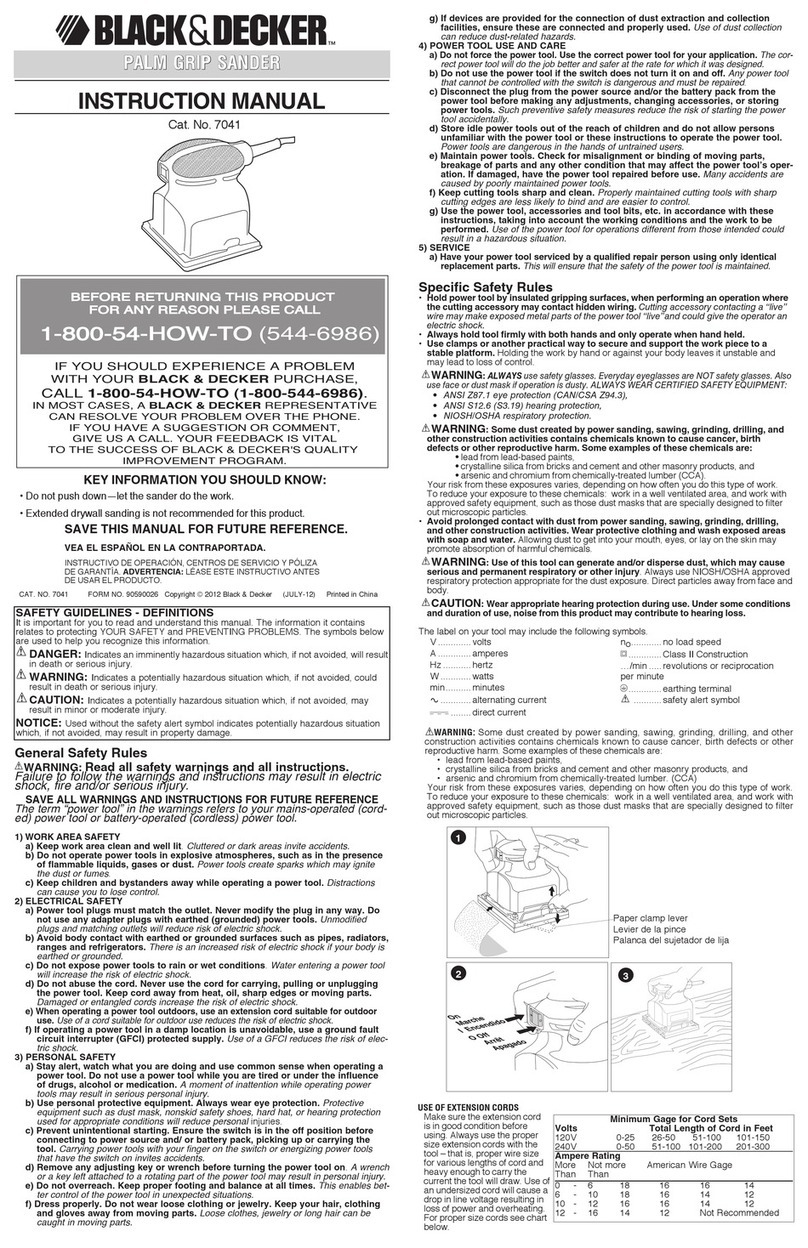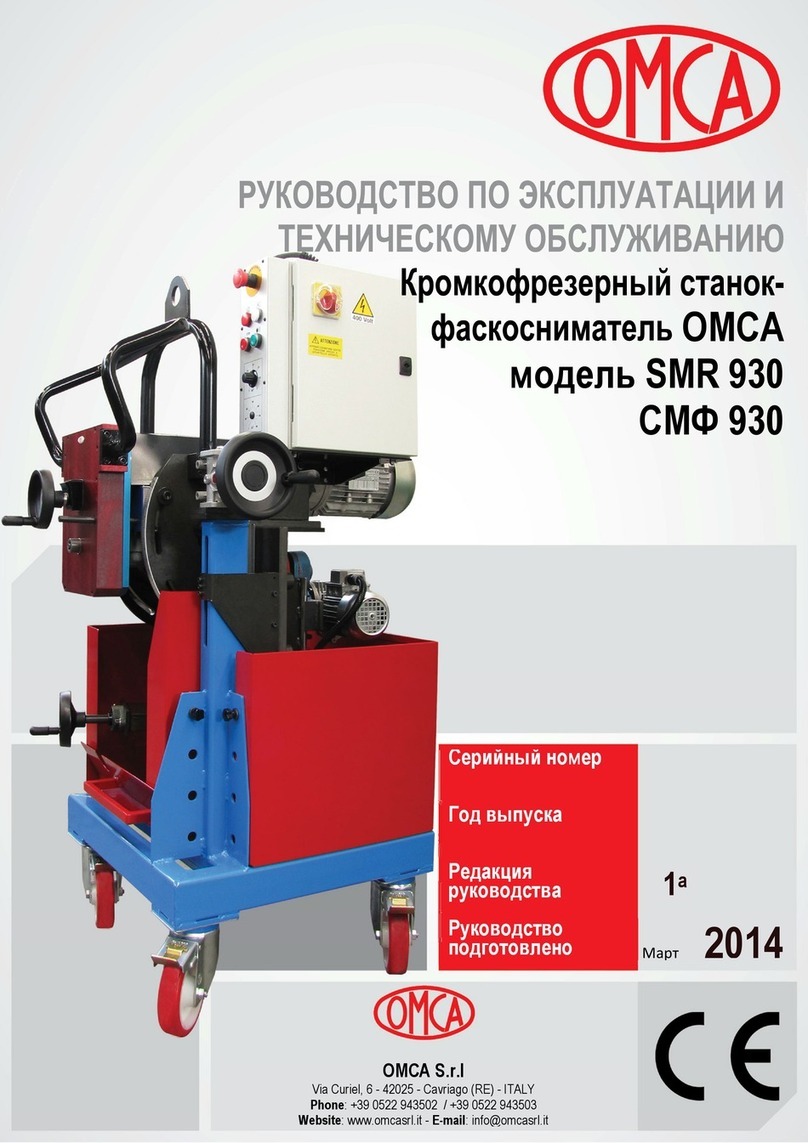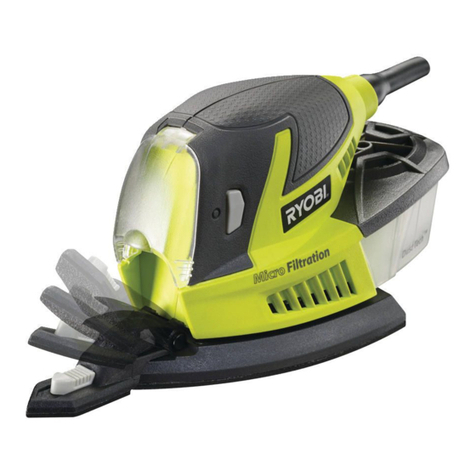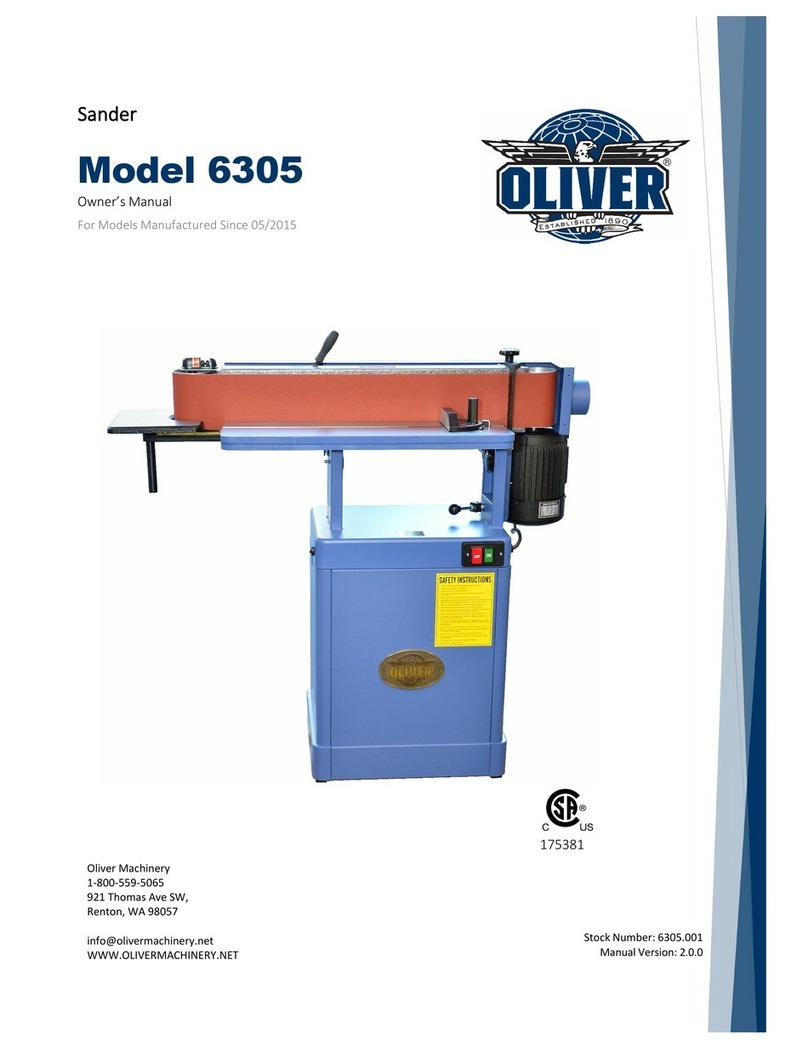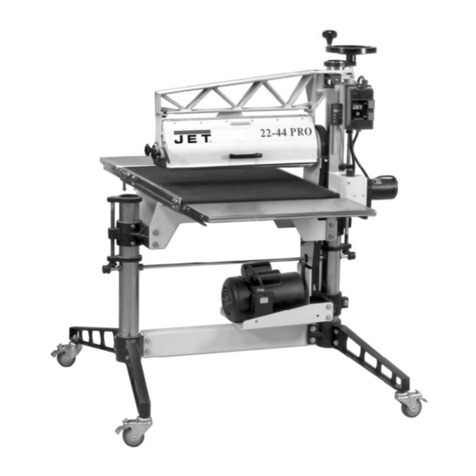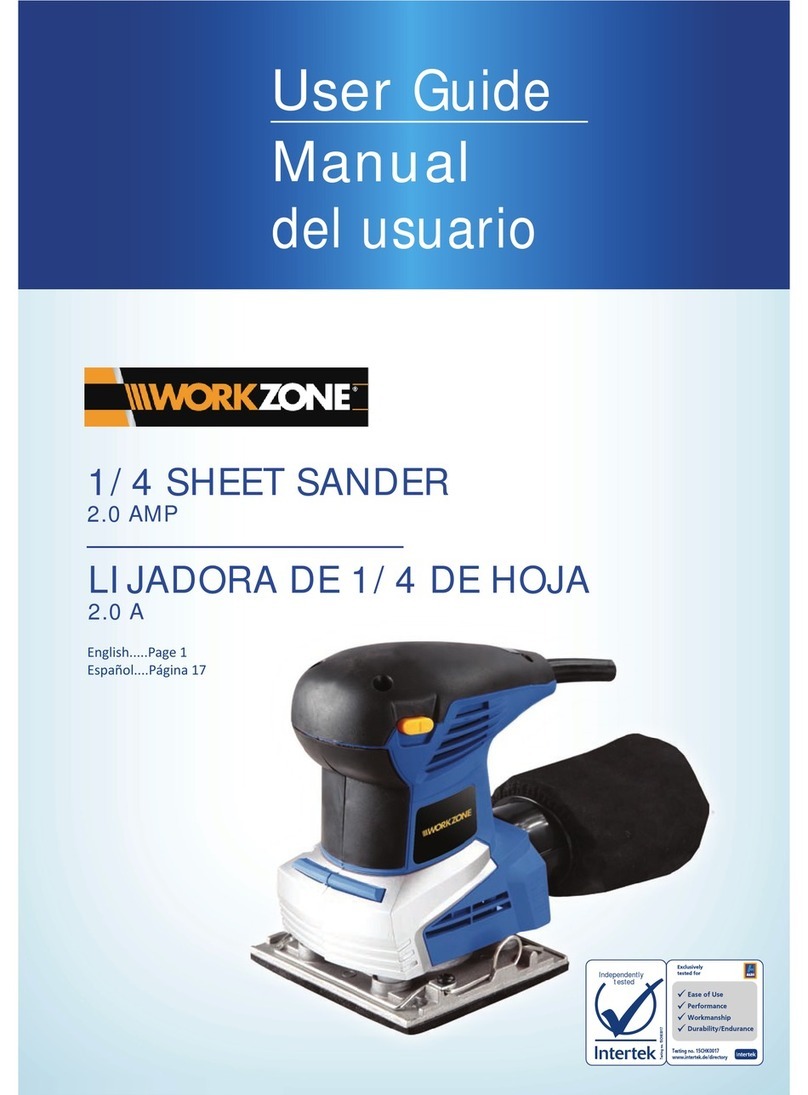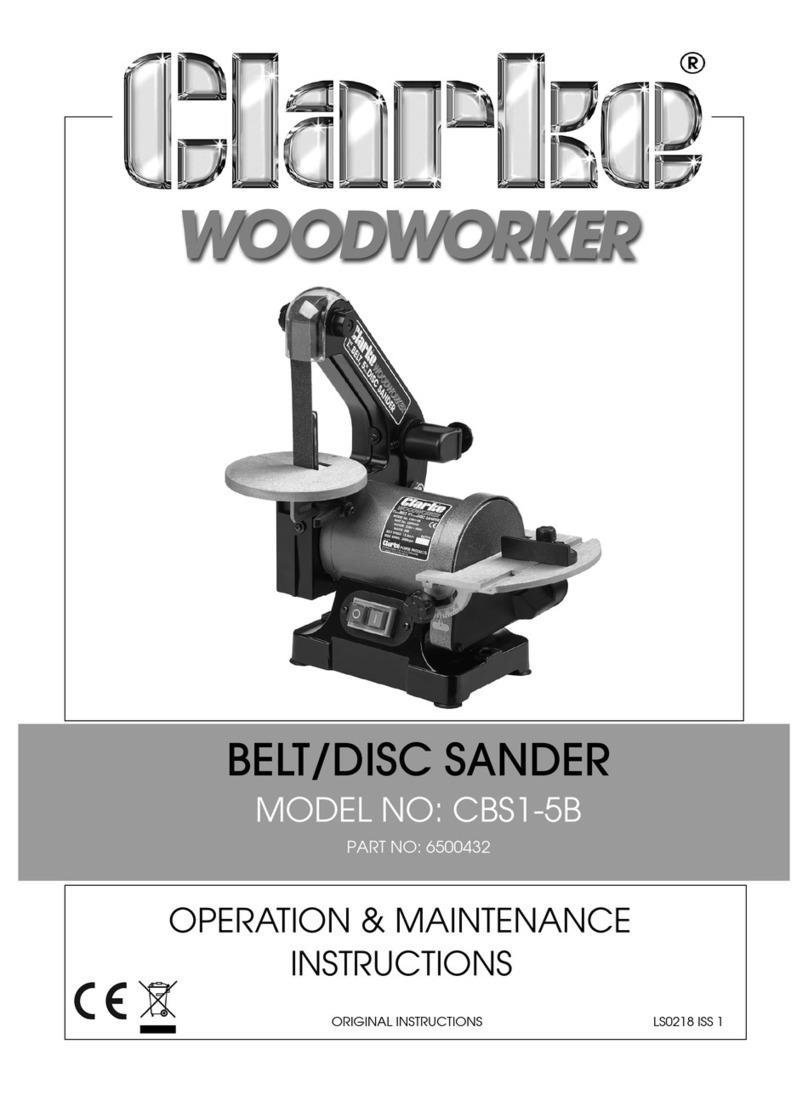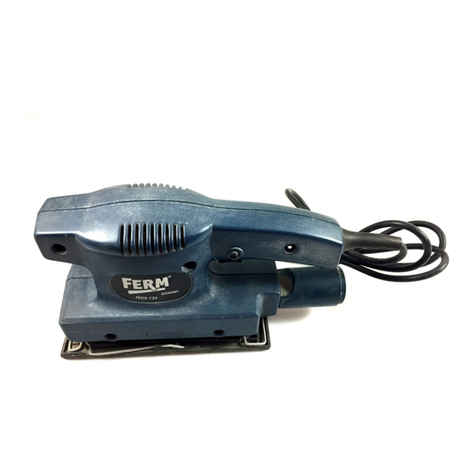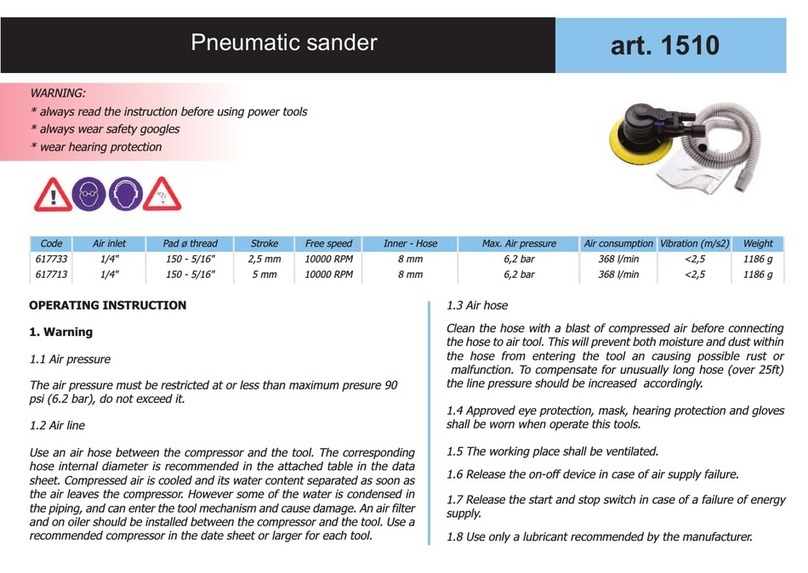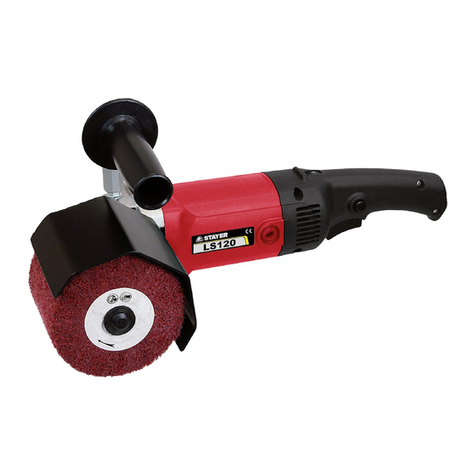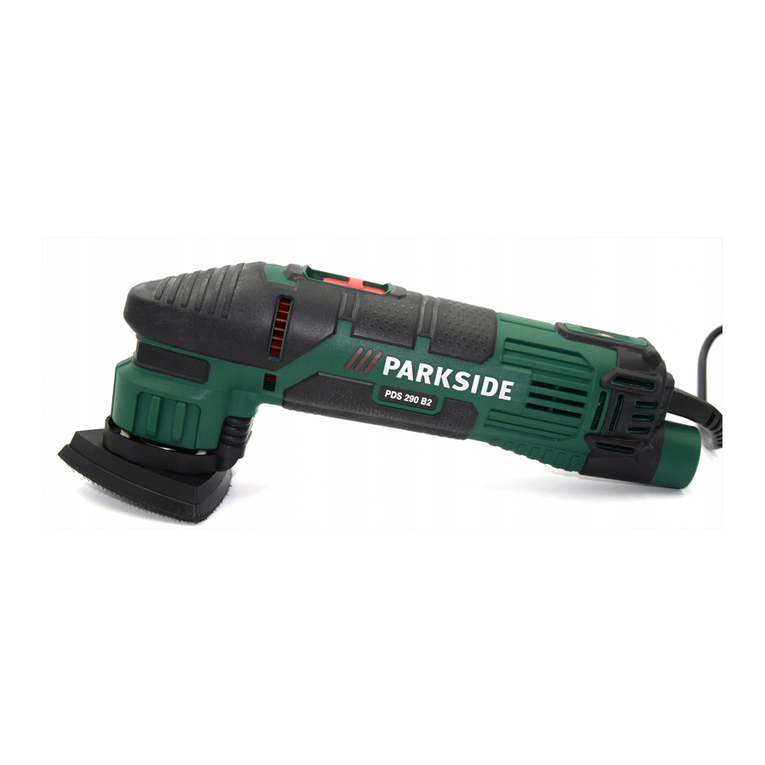
5ENGLISH
SAFETY W ARNINGS
General pow er tool safety w arnings
WARNING:
Read all safety w arnings, instruc-
tions, illustrations and specications provided with this
pow er tool. F ailure to f ollow all instruc tions listed below
may result in electric shock, re and/or serious injury.
Save all w arnings and instruc-
tions for future reference.
T h e term " pow er tool" in th e w arnings ref ers to y our
mains-operated ( c ord ed ) pow er tool or battery -operated
( c ord less) pow er tool.
Polisher safety w arnings
1 .
This pow er tool is intended to function as a pol-
isher. Read all safety w arnings, instructions, illus-
trations and specications provided with this power
tool. F ailure to f ollow all instruc tions listed below may
result in electric shock, re and/or serious injury.
2. Operations such as grinding, w ire brushing
or cutting-off are not recommended to be
performed w ith this pow er tool. O perations f or
w h ic h th e pow er tool w as not d esigned may c reate
a hazard and cause personal injury.
3.
Do not use accessories which are not specically
designed and recommended by the tool manufac-
turer. Just bec ause th e ac c essory c an be attac h ed to
y our pow er tool, it d oes not assure saf e operation.
4 . The rated speed of the accessory must be at
least equal to the maximum speed marked on
the pow er tool. A c c essories running f aster th an
their rated speed can break and y apart.
5 .
Threaded mounting of accessories must match
the spindle thread. For accessories mounted
by anges, the arbour hole of the accessory
must t the locating diameter of the ange.
A c c essories th at d o not matc h th e mounting
h ard w are of th e pow er tool w ill run out of balanc e,
v ibrate ex c essiv ely and may c ause loss of c ontrol.
6 .
Do not use a damaged accessory. Before each
use inspect the accessory such as backing pad
for cracks, tear or excess w ear. If pow er tool or
accessory is dropped, inspect for damage or
install an undamaged accessory. After inspecting
and installing an accessory, position yourself and
bystanders aw ay from the plane of the rotating
accessory and run the pow er tool at maximum
no-load speed for one minute. D amaged ac c esso-
ries w ill normally break apart d uring th is test time.
7.
W ear personal protective equipment.
Depending on application, use face shield,
safety goggles or safety glasses. As appropri-
ate, w ear dust mask, hearing protectors, gloves
and w orkshop apron capable of stopping small
abrasive or w orkpiece fragments. T h e ey e pro-
tection must be capable of stopping ying debris
generated by v arious operations. T h e d ust mask
or respirator must be capable of ltrating particles
generated by y our operation. P rolonged ex posure
to h igh intensity noise may c ause h earing loss.
8 .
Keep bystanders a safe distance aw ay from w ork
area. Anyone entering the w ork area must w ear
personal protective equipment. F ragments of
workpiece or of a broken accessory may y away and
cause injury beyond immediate area of operation.
9 . Position the cord clear of the spinning acces-
sory. I f y ou lose c ontrol, th e c ord may be c ut or
snagged and y our h and or arm may be pulled into
th e spinning ac c essory .
1 0. Never lay the pow er tool dow n until the acces-
sory has come to a complete stop. T h e spinning
ac c essory may grab th e surf ac e and pull th e
pow er tool out of y our c ontrol.
1 1 . Do not run the pow er tool w hile carrying it at
your side. A c c id ental c ontac t w ith th e spinning
ac c essory c ould snag y our c loth ing, pulling th e
ac c essory into y our bod y .
1 2. Regularly clean the pow er tool’ s air vents. T h e
motor’ s f an w ill d raw th e d ust insid e th e h ousing
and ex c essiv e ac c umulation of pow d ered metal
may c ause elec tric al h az ard s.
1 3. Do not operate the power tool near ammable
materials. S parks c ould ignite th ese materials.
14. Do not use accessories that require liquid
coolants. U sing w ater or oth er liq uid c oolants
may result in elec troc ution or sh oc k.
Kickback and Related W arnings
Kic kbac k is a sud d en reac tion to a pinc h ed or snagged
rotating w h eel, bac king pad , brush or any oth er ac c es-
sory . P inc h ing or snagging c auses rapid stalling of th e
rotating ac c essory w h ic h in turn c auses th e unc on-
trolled pow er tool to be f orc ed in th e d irec tion opposite
of th e ac c essory ’ s rotation at th e point of th e bind ing.
F or ex ample, if an abrasiv e w h eel is snagged or
pinc h ed by th e w orkpiec e, th e ed ge of th e w h eel th at is
entering into th e pinc h point c an d ig into th e surf ac e of
th e material c ausing th e w h eel to c limb out or kic k out.
The wheel may either jump toward or away from the
operator, d epend ing on d irec tion of th e w h eel’ s mov e-
ment at th e point of pinc h ing. A brasiv e w h eels may also
break und er th ese c ond itions.
Kic kbac k is th e result of pow er tool misuse and / or
inc orrec t operating proc ed ures or c ond itions and c an be
av oid ed by taking proper prec autions as giv en below .
1 . Maintain a rm grip on the power tool and
position your body and arm to allow you to
resist kickback forces. Alw ays use auxiliary
handle, if provided, for maximum control over
kickback or torque reaction during start-up.
T h e operator c an c ontrol torq ue reac tions or kic k-
bac k f orc es, if proper prec autions are taken.
2. Never place your hand near the rotating acces-
sory. A c c essory may kic kbac k ov er y our h and .
3. Do not position your body in the area w here
pow er tool w ill move if kickback occurs.
Kic kbac k w ill propel th e tool in d irec tion opposite
to th e w h eel’ s mov ement at th e point of snagging.
4 . Use special care w hen w orking corners, sharp
edges etc. Avoid bouncing and snagging the
accessory. C orners, sh arp ed ges or bounc ing
h av e a tend enc y to snag th e rotating ac c essory
and c ause loss of c ontrol or kic kbac k.
5 . Do not attach a saw chain w oodcarving blade
or toothed saw blade. S uc h blad es c reate f re-
q uent kic kbac k and loss of c ontrol.
